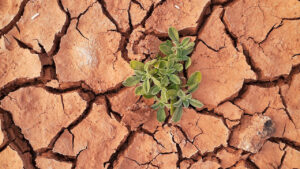By Adrian H. Halili, Reporter
THE PHILIPPINES should consider cultivating crops classified as genetically modified organisms (GMOs) to mitigate the impact of climate disasters like typhoons and El Niño.
“When you look at the scale of damage that’s been caused, then I think it’s important for the sector to look at ways in which they can combat that,” Rory O’Donnell, an agriculture and trade expert for business solutions firm Penta, told BusinessWorld.
He added that GMO crops are already being planted in parts of Europe to alleviate drought conditions.
President Ferdinand R. Marcos, Jr. has ordered the Solicitor General to seek clarification and reconsideration of the decision to ban on the use of GMOs.
Mr. Marcos said that the decision would have a “widespread” impact on agriculture and food security.
“It basically is a means of accelerating natural genetic changes in crops,” Mr. O’Donnell said.
“The idea behind that is to develop crops that are drought resistant or more resistant to pests and therefore reduce the requirement for pesticides and other artificial additions,” he added.
The Court of Appeals (CA) revoked the biosafety permits for the commercial propagation of Golden Rice and Bt Eggplant, citing the potential risk to the environment and the health of consumers.
It also stopped field testing and imports until all measures were taken to ensure they were safe.
In a Senate hearing on Tuesday, the Department of Agriculture said it is also seeking reconsideration of the CA’s decision.
“There is a general communications problem around GMOs and new genomic techniques, where it’s very easy for people who are against them to say that there is a theoretical risk that is hard to assess and therefore, we shouldn’t do anything,” Mr. O’Donnell said.
He added that the agriculture industry continues to face the impact of climate change worldwide.
“The degree of climate change and the implications that’s having across the world for agriculture — I think we have to start looking at all the tools that are available. That’s not to say you don’t have to have rigorous scientific processes in place to ensure they’re safe,” Mr. O’Donnell said.
Damage and loss caused by El Niño have hit P6.35 billion as of May 8, with rice and corn the most affected crops. The total affected area was 111,702 hectares, impacting 121,389 farmers and fisherfolk.
Additionally, the DA said that it is currently preparing for above normal rainfall brought about by La Niña in the second half of the year.
PAGASA (Philippine Atmospheric, Geophysical and Astronomical Services Administration), the government weather service, said there is a 62% chance of La Niña setting in between June and August.
